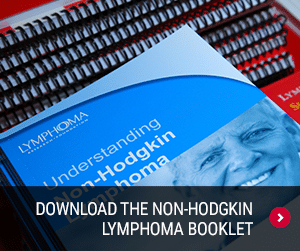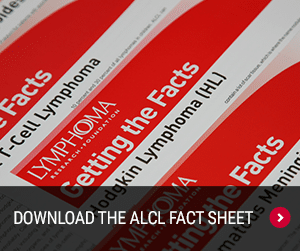
What is Lymphoma?
Anaplastic Large Cell Lymphoma
Anaplastic large cell lymphoma (ALCL) is a rare type of non-Hodgkin lymphoma (NHL) and one of the subtypes of T cell lymphoma. ALCL comprises about one percent of all NHLs and approximately 16 percent of all T cell lymphomas.
Diagnosis
A diagnosis of ALCL requires taking a biopsy (small sample of tumor tissue or abnormal skin tissue) and looking at the cells under a microscope. Additional tests may be conducted to give physicians more information about the disease and how far it has spread in the body. These can include blood tests, a CT scan, a PET scan, a MRI scan, and bone marrow biopsy.
Cutaneous vs. Systemic Anaplastic Large Cell Lymphoma
ALCL can initially appear either in the skin, the lymph nodes, or in organs throughout the body.
Cutaneous ALCL
ALCL that appears in the skin is most often called primary cutaneous ALCL, and it typically has a less aggressive disease course than the systemic type. The characteristic features of primary cutaneous ALCL include the appearance of solitary or multiple raised, red skin lesions that do not go away, have a tendency to ulcerate, and may itch. Only about 10 percent of the time does primary cutaneous ALCL extend beyond the skin to lymph nodes or organs. If this occurs, it is usually treated like systemic ALCL.
Systemic ALCL
Patients with systemic ALCL are divided into two groups: ALK-positive and ALK-negative ALCL. Although both systemic lymphomas are treated as aggressive lymphomas, the disease course may be different.
ALK-positive ALCL responds well to standard chemotherapy treatments, putting most patients into long-term remission. In contrast, while most people with ALK-negative ALCL initially respond to treatment as well, the disease is more likely to relapse (disease returns after treatment) within five years. Sometimes, ALK-negative patients are treated more aggressively, often with a stem cell transplant after remission. While ALK-positive ALCL usually affects children and young adults, ALK-negative ALCL is more common in patients over the age of 55 years.
To learn more about ALCL, download the Anaplastic Large Cell Lymphoma Fact Sheet.


